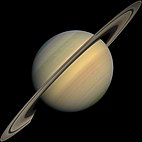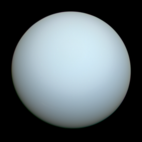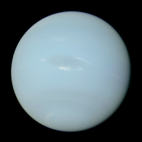
Back Reuseplaneet Afrikaans كوكب عملاق Arabic Nəhəng planetlər Azerbaijani Divovske planete BS Planeta gegant Catalan Riesenplanet German Giganta planedo Esperanto Planeta gigante Spanish Planeta erraldoi Basque سیاره غولپیکر Persian
- (top) Jupiter and Saturn (gas giants)
- (bottom) Uranus and Neptune (ice giants)
A giant planet, sometimes referred to as a jovian planet (Jove being another name for the Roman god Jupiter), is a diverse type of planet much larger than Earth. Giant planets are usually primarily composed of low-boiling point materials (volatiles), rather than rock or other solid matter, but massive solid planets can also exist. There are four such planets in the Solar System: Jupiter, Saturn, Uranus, and Neptune. Many extrasolar giant planets have been identified.
Giant planets are sometimes known as gas giants, but many astronomers now apply the term only to Jupiter and Saturn, classifying Uranus and Neptune, which have different compositions, as ice giants. Both names are potentially misleading; the Solar System's giant planets all consist primarily of fluids above their critical points, where distinct gas and liquid phases do not exist. Jupiter and Saturn are principally made of hydrogen and helium, whilst Uranus and Neptune consist of water, ammonia, and methane.
The defining differences between a very low-mass brown dwarf and a massive gas giant (~13 MJ) are debated. One school of thought is based on planetary formation; the other, on the physics of the interior of planets. Part of the debate concerns whether brown dwarfs must, by definition, have experienced nuclear fusion at some point in their history.[1]



